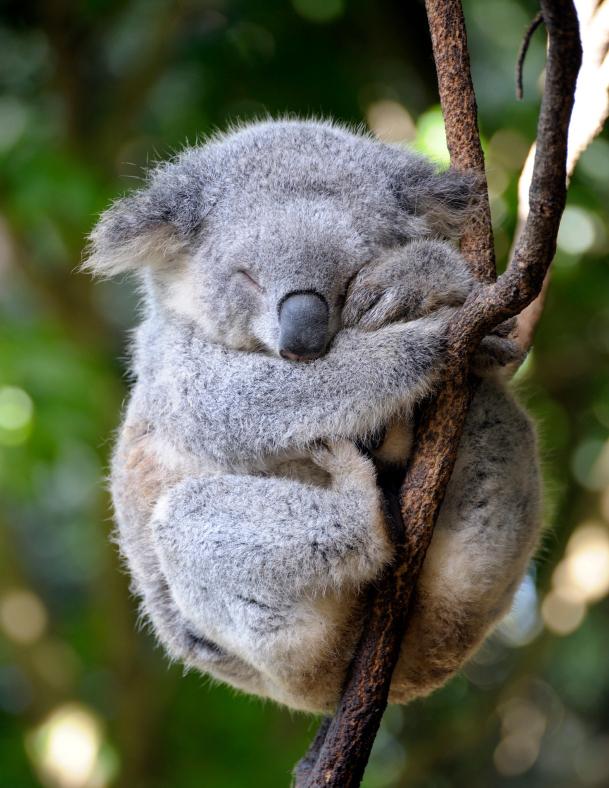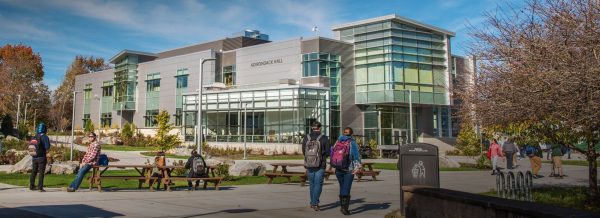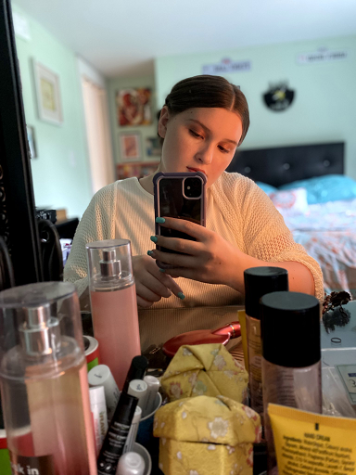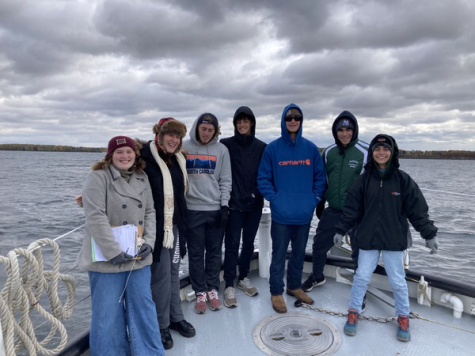Aussie Bushfires Displace Koala Population
February 4, 2015
The Australian states of South Australia, Victoria, and New South Wales(NSW) have endured the state’s worst fire conditions since the Ash Wednesday blaze in 1983, in which 28 people died.
The raging fires have significantly affected farms and other private land in the area, causing wide ranging damage to crops and leaving many animals in danger.
An estimated 12,500 hectares(30,000 acres) of bushland have been destroyed in the bushfires that raged in early January. the blaze was declared a “catastrophe” by the Aussie parliament.
Several hundred koalas were killed and thousands injured as fires spread across the states of South Australia and Victoria.
The International Fund for Animal Welfare(IFAW) says the group is getting an outpouring of support in the form of mittens for koalas hurt in recent Australian bushfires.
Koalas are slow moving so can’t get out of harm’s way quickly enough, according to IFAW. The group says babies “wait in burning trees, crying out for their mothers.”
it was impossible to know how many dehydrated and injured koalas remained on the fire grounds. The slow moving marsupials are at constant risk in wildfires where they often perish from severe burns or dehydration.
Rae Campbell, a worker at the hospital, said the animals are normally found with burnt paws and rumps so they have to be given the mittens while they recover.
The animal welfare group says the koalas, who have burns on their paws, need treatment with burn cream before being wrapped in bandages. Once the bandages are on, cotton mittens are used to protect them.
The IFAW instructed that the mitten can be created using either old sheets, cotton T-shirts or tea towels. Josey Sharrad, IFAW native wildlife campaigner, said in a statement that an abundant supply of these mittens is needed throughout the bushfire season.
“Just like any burns victim, koalas’ dressings need changing daily, meaning a constant supply of mittens is needed by wildlife carers. Some burned koalas can take up to a year to fully recover.”
volunteers across the world quickly came to the rescue with custom-knitted mittens for the burned paws of koalas most of the koalas being treated will be able to return to the wild afterwards and live a normal life.
The IFAW has been swamped with thousands of mittens sent from all over Australia, the United States and Russia. Their message now is that they need a cease in the donation of anymore mittens,With enough pairs to easily maintain stocks for the next few years, the mittens are now being sent on to other carers. Josey reiterates, “we don’t really want anymore mittens”. Rather The IFAW is urging people to make and send knitted pouches for kangaroos, wallabies, and wombats that have suffered injuries or been orphaned in the fires. Unlike the specialty mittens, the pouches can be used for several animals all year round. Plus with animals working their way through several pouches a day as they have to be changed with every feeding, they need a lot.
“This began as a small regional effort, and in Australia we are now moving to work with local people to create cozy pouches for other wildlife like possums, kangaroos,wombats and wallabies that are also at risk from bushfires,” the IFAW said in a statement.
A vast numbers of these sleepy marsupials have been left homeless by these bushfires
Australian Marine Wildlife Research and Rescue Organisation spokesman Aaron Machado said that the destruction of the animals’ habitat would have a devastating effect on koala populations. Displaced koalas will be forced into new areas, and there could be issues with territorial alpha males, he added. “It is going to be extremely stressful for the koala population in that area,” Machado said.
Due to the fact that each Koala’s ‘home’ is made up of several trees called home trees. They visit these same trees regularly. The area covered by these trees is called the Koala’s home trees. Each Koala has its own home range, which overlaps those of other Koalas but except for breeding purposes, they do normally not visit another Koala’s home trees. The size of each home range depends upon a range of factors including the quality of the habitat and the sex, age and social position in the population of the Koala.
Stress can cause Koalas to fall ill, Chlamydia is an organism which lives in the body tissues of most healthy Koalas. In normal populations, it is believed that Chlamydia may act as an builtin control mechanism to limit the population so that the trees are not over browsed, ensuring that only the strongest and fittest animals survive to breed, But can also sometimes make the Koalas sick when they are faced with stress, such as when their habitat is destroyed.
Climate change is also affecting koalas. Recent hotter, drier conditions are reducing the nutritional value and water content of eucalyptus leaves, leading to dehydration and fatal malnutrition.
The once abundant Koala has been listed as a threatened species in three areas of Australia, the country’s federal government has announced. The number of koalas has dropped dramatically in the regions of New South Wales, Queensland and the Australian Capital Territory over the last two decades.
Koalas live in eucalyptus forests, along the east coast states Queensland, New South Wales, South Australia and Victoria. It is believed that Australia was home to millions of the species before British settlers arrived. Over 2 million koalas were hunted and killed between 1908 and 1927. largely for its thick soft fur ,pelts were in high demand for use in rugs, coat linings and as trimming on women’s garments. Extensive cullings occurred in Queensland in 1915, 1917, and again in 1919, when over one million koalas were killed with guns, poisons and snared nooses(Aboriginal hunting method)
The public outcry over these cullings were probably the first wide-scale environmental issue that rallied the Australian people. Despite the growing movement to protect native species, the poverty brought about by the drought of 1926 through 1928 led to the killing of another 600,000 koalas during a one-month open season in August 1927. In 1934, Frederick Lewis, the Chief Inspector of Game in Victoria, said that the once abundant animal had been brought to near extinction in that state, suggesting that only 500–1000 remained.
Novelist and social critic Vance Palmer writing in a letter to the The Courier-Mail, expressed the popular sentiment: “The shooting of our harmless and lovable native bear is nothing less than barbarous … No one has ever accused him of spoiling the farmer’s wheat, eating the squatter’s grass, or even the spreading of the prickly pear. There is no social vice that can be put down to his account … He affords no sport to the gun-man … And he has been almost blotted out already from some areas.”
The Victorian population of koalas have received no protection from the Aussie government the Australian Koala Foundation argues that the exclusion of Victorian populations from protective measures is based on a misconception that the total koala population is over 200,000, whereas they believe it is probably well under 100,000.
Koala conservation has taken a massive blow in the last few years.
Queensland Dr. Alistair Melzer says the situation for koala populations is now dire across the state. “What we’ve seen over the last three years is effectively the dismantling of the state-based infrastructure for koala research and management,” he said.
Dr. Melzer says during the 1995 Queensland election campaign, koala politics was at its peak with huge opposition to a proposed highway through koala habitat near Brisbane.
He says since then a lot of focus has been on conserving koalas in south-east Queensland.
“Despite that those populations have crashed and are in danger of extinction,” he said.
But there have been measures taken in order to save the koalas fast disappearing habitat,
In New South Wales The Private Native Forestry Code of Practice contains requirements to protect native flora and fauna, including koalas. Where there is a known record in the Atlas of NSW Wildlife or there is site evidence of koalas, requirements such as retaining additional feed and habitat trees are imposed. In some cases, such requirements may prohibit forestry operations completely.
The International Union for Conservation of Nature (IUCN) lists koalas as “least concern” for extinction because of “its wide distribution, presumed large population and because it is unlikely to be declining at nearly the rate required to qualify for listing in a threatened category.”
The AKF Challenged this listing and has Just completed research shows that the current koala population is somewhere between 43,000-70,000 individuals, a decline from an estimated 150,000 in 2003, and without better conservation efforts they could all be extinct within 30 years. The Koala the Iconic Marsupial and face of the Australian Bushland risks going the way of the Dodo Bird, doomed to fade away into the annals of history.
Koala Facts
1- Koalas have 5 digits on each front paw, two of which are opposed to the others, much like our thumbs are able to be moved differently from the fingers. This helps them to hold firmly onto the branches and to grip their food. The 2nd and 3rd digits on their hind paws are fused together to form a grooming claw. There are similarities between the fingerprints of a koala and that of a human beings fingerprint. They are the only other mammals besides Primates to have them.
2-Most of their time is spent sleeping because it requires a lot of energy to digest their toxic, fibrous, low-nutrition diet of Eucalyptus leaves and sleeping is the best way to conserve energy.
3- Koalas in the southern parts of Australia are considerably larger and have thicker fur than those in the north. This is thought to be an adaptation to keep them warm in the colder southern winters.
4- A mature male has a dark scent gland in the centre of his white chest which exudes a dark, sticky substance. He rubs this on his trees to indicate to other Koalas that this is his territory.
5- Koalas also communicate with each other by making a range of noises. The most startling and unexpected of these in such a seemingly gentle animal is a sound like a loud snore and then a roaring belch, known as a ‘bellow’. which can be heard up to a kilometer away
6- When the Joey is born, it’s only about 2 centimetres long, is blind and hairless and its ears are not yet developed. On its amazing journey to the pouch, it relies on its well-developed senses of smell and touch, its strong forelimbs and claws, and an inborn sense of direction. Once in the pouch, it attaches itself to one of the two teats which swells in its mouth, preventing it from being dislodged from its source of food.
7- Female Koalas are fully mature by about 2 years of age and males by their third or fourth year. By this time they need to have found their own home range, either in a home range left vacant by a dead Koala or in a new area of the forest. This is one reason why Koalas need quite large areas of habitat.
8- There are well over 600 varieties of eucalypts. Koalas eat only some of these. They are very fussy eaters and have strong preferences for different types of gum leaves. Within a particular area, as few as one, and generally no more than two or three species of eucalypt will be regularly browsed while a variety of other species, including some non-eucalypts, appear to be browsed occasionally or used for just sitting or sleeping in.
9- A forest can only have a certain number of Koalas living in it. This is called the forest’s ‘carrying capacity’. the available gumtrees can only feed a certain number of Koalas. At around six years of age, the koala’s chewing teeth begin to wear down and their chewing efficiency decreases. Eventually, the cusps will disappear completely and the animal will die of starvation.
10- Koalas don’t normally need to drink as they get all the moisture they need from the gum leaves. However, they can drink if necessary, such as in times of drought when the leaves may not contain sufficient moisture.
11- Habitat loss is the greatest problem facing koalas. The main reasons for this are landclearing, bushfires and diseases of the eucalypts, like ‘dieback’ which cause the trees to die.
12- The Australian Koala Foundation estimates that as a result of the loss of their habitat, around 4,000 Koalas are killed each year by dogs and cars alone. Australia has one of the highest land clearing rates in the world. 80% of Koala habitat has already disappeared. Although koalas themselves are protected by law, around 75% of any remaining habitat occurs on privately owned land and almost none of that is protected by legislation.
13- Koalas were hunted for food by Aboriginals , according to the customs of some tribes it was considered taboo to skin the animal, while other tribes thought the animal’s head had a special status, and saved them for burial.
14- The Dropbear is a fictitious Australian marsupial of Aboriginal origin . Drop bears are commonly said to be unusually large, vicious, carnivorous marsupials related to koalas that inhabit treetops and attack their prey by dropping onto their heads from above.They are an example of local lore intended to frighten and confuse outsiders and amuse locals, similar to the
jackalope, hoop snake, wild haggis or snipe. Various methods suggested to deter drop bear
attacks include placing forks in the hair, having Vegemite(a dark brown Australian food paste) or toothpaste spread behind the ears or in the armpits, urinating on oneself, and only speaking English in an Australian accent.
15- The koala’s scientific name is Phascolarctos Cinereus, meaning ash grey pouched bear
16- The koala’s closest living relative is the wombat, which is a stationary burrower rather than a nomadic arboreal like the koala. They both have pouches which open towards the rear. This is fine for the wombat, but koalas need strong muscles ringing the pouch to keep their joey from falling out.
17- The word “koala” is thought to have come from the Aboriginal word meaning “no drink.” Although koalas do drink water on occasion, most of their hydration requirements are fulfilled by the moisture they get from eating eucalyptus leaves.
18- It’s Pear-shaped body provides stability while the koala sits in trees. Opposable thumbs and toes allow for a tight grip when climbing.Rough pads on undersurface of hands and feet increase traction while the koala is climbing. They also have a curved backbone and two fewer pairs of ribs than most mammals (11 instead of 13) creating a curled skeletal structure that fits well into the forks of trees
19- Koalas have big, fluffy ears and an excellent sense of hearing. Because they have poor eyesight, koalas generally detect predators by sound, They have an even better sense of smell, which helps them select which leaves are best to eat. Occasionally koalas are killed by Goannas(monitor lizards), Eagles, Dingoes,Pythons and Owls. Adolescent koalas are targeted due to their clumsy behavior.
20- The koala has the smallest brain to body mass ratio of all the mammals and it has a smooth brain due to this koalas are unable to perform complex, unfamiliar tasks such as eating leaves off of flat surfaces if you were to pick eucalyptus leaves, which are its main food source, off the branch and put them on a plate the koala wouldn’t know what to do with them.
Koala being treated with burn cream
http://d.ibtimes.co.uk/en/full/1418318/koala-mittens.jpg?w=628&h=600&l=50&t=40
Koala wearing burn mittens
http://www.metro.us/_internal/gxml!0/2qijkhn0ctpwx8acoz5fxkpvtmr4nbh$6fc1pcznxvip2y9qgq88vosil78ipnl/koala-mittens_rexusa_2615296b.jpeg
http://www.metro.us/_internal/gxml!0/2qijkhn0ctpwx8acoz5fxkpvtmr4nbh$jm6ycoj68opf60xoz33j7w0he4b1iyf/koala-mittens_rexusa_2615296a.jpeg
http://www.metro.us/_internal/gxml!0/2qijkhn0ctpwx8acoz5fxkpvtmr4nbh$4l3wosjdrcjj46yfdcn9ba5jepycxiq/koala-mittens_rexusa_2615296c.jpeg
Dehydrated Koala is givin water
Russian President Vladimir Putin Hugging Koala
http://i.dailymail.co.uk/i/pix/2014/11/15/1416085567431_wps_5_Russia_s_President_Vladim.jpg










